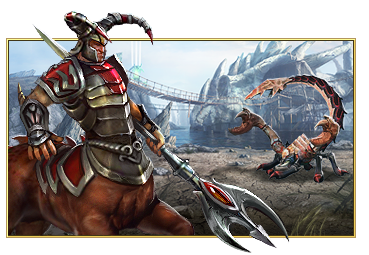Most of north eastern Tartu is occupied by the Taur Steppes, lifeless plains with more rocks than plants, scorched by the grim sun and polished by the undying winds. Although the history of Tartu holds many names of countries and realms that claimed ownership of these lands, in reality, the area never belonged to anyone, always too wild to be tamed by any power. Even the eastern part of the steppes that granted access to the sea played no important role. High-cliffed shores and deadly reefs made it unsuitable for seafaring. There was no point in building a fort here – it seemed that no one would consider attacking Tartu from such a disadvantageous direction. Then again, this notion proved to be not entirely true and that area was a target of a military strike once, during the Second Great War. The memory of that day still stays with the Cape...
At first, regiments that were sent to the Сape to repel an enemy assault thought the commanders had completely lost their minds. It was highly unlikely that the enemy would attack Tartu here, in the most unfavorable of places. But an order is an order, and the desolate shore was soon covered with the famous Dedaire guns, Human catapults and ballistas. Elven sorcerers prepared to rain storms and hurricanes upon the enemy, while Dragon Knights soared in the sky, ready to strike from above.
It became clear that the command was right all along when a Tangor army appeared on the horizon. But no ships were to be seen. Giant floating fortresses hovered over the sea, and leading the advance was – to the astonishment of the defenders – a titanic creature whose enormous wings eclipsed the sun: the Wyvern. The flying monstrosity decided not to wait for the slow-moving Tangors and in an abrupt nosedive darted at the Tartu's defense force, which froze, terrified by the sight. Dragons who rushed in to intercept the creature were torn to shreds by creature's claws.
The defenders lost that battle. As the Tangor fortresses flew over the battlefield, they found no survivors – the melted shore was covered with dead bodies. But Tartu's defenders hadn't died in vain. The wounded Wyvern floundered in the sea, unable to climb the sheer cliffs. Its strength faded by the minute. The creature was doomed – the Tangors wouldn't even help their own kind, let alone a temporary ally.
When the war ended and the Republic of Tartu was first established, its senators wanted to break the giant skeleton of the beast into pieces and sink them in the sea, creating a monument in the place of Wyvern's resting place. But later, they abandoned the idea, deciding that the skeleton itself was the best monument for the brave warriors, and at the same time a reminder for all Tartu's enemies: any invader, no matter how big and strong, will be destroyed!

Despite this magnificent landmark, Cape Wyvern never really became popular with travelers because of the dangers that lurk there. The half-Human, half-horse nomads consider the area to be part of their territories and severely punish any who dare to trespass. Taur squads have been seen near the Cape on many occasions, prowling the vicinity, ready to attack anyone who approaches. But there are creatures even more unpleasant than Taurs here. Giant scorpion-like scorcillas can cut steel with their powerful pincers and the poisoned sting of their tails brings nothing but excruciatingly painful death. Inexperienced warriors shouldn't even approach these creatures, let alone try to fight them.
Patrols assigned to this area report that Cape Wyvern has changed a lot recently. A strange, magical construction has been built on a steep, and glowing runes and signs have appeared on the nearby cliffs. Taurs are not known to possess any magical abilities, so they most probably had nothing to do with it. And so, the identity of the Cape's mysterious guests is yet to be discovered.